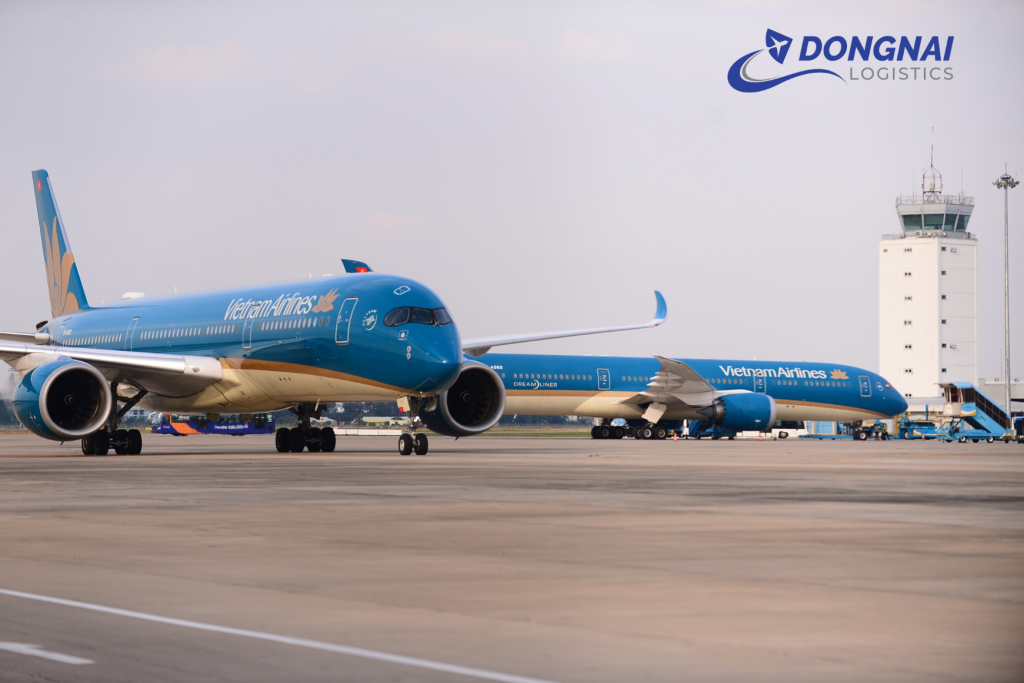Ensuring Aviation Safety in Vietnam After Earthquake in Myanmar and Thailand
On the afternoon of March 28, a 7.7-magnitude earthquake struck Myanmar and Thailand, significantly impacting aviation operations in the region. Major international airports in Thailand were forced to temporarily suspend flight operations. To ensure safety, the Civil Aviation Authority of Vietnam (CAAV) promptly directed relevant units to closely monitor the situation.
Impact of the Earthquake
At 14:09, the Flight Coordination Notification Center received information from the Ho Chi Minh Area Control Center (ACC HCM) about the earthquake’s effects. Bangkok’s two largest airports, Suvarnabhumi and Don Mueang, had to temporarily halt incoming and outgoing flights. These airports handle high passenger traffic and are key destinations for many Vietnamese airlines.
Air traffic control systems in Southeast Asia experienced considerable disruptions. Some flights en route to Bangkok had to adjust their plans, while airlines received emergency notifications regarding route changes.
Measures to Ensure Aviation Safety
Upon receiving the information, the CAAV swiftly implemented response measures. The Air Traffic Flow Management Center issued emergency notifications to domestic airlines, while the National Flight Operations Center under the Air Defense – Air Force Command was also updated on the situation.
Vietnam’s Air Traffic Flow Coordination Center received updates from Thai authorities and implemented appropriate coordination measures. Flights to Suvarnabhumi Airport had to strictly adhere to calculated departure times to ensure safety and avoid overloading the air traffic system.
At Don Mueang Airport, a minimum five-minute spacing rule between flights was enforced. If no precise departure time was available, this regulation remained in place to maintain orderly air traffic control.
Additionally, the CAAV instructed airlines to continuously monitor updates from Thai authorities. Close coordination with Bangkok’s Air Traffic Flow Management Center facilitated quick and efficient flight plan adjustments.

Impact on Flights from Vietnam
The earthquake affected several flights from Vietnam to Bangkok. Vietnamese airlines promptly adjusted their schedules to ensure passenger safety. Some impacted flights included:
-
VN610 (Hanoi – Bangkok) by Vietnam Airlines: Had to return for refueling and awaited clearance from airport authorities. The flight later departed at 14:55 (local time).
-
AIQ637 (Da Nang – Bangkok) by Thai AirAsia: Experienced a delay from the original schedule and took off at 14:59 (local time).
However, several other flights proceeded as planned without disruptions:
-
VN615 (Hanoi – Bangkok) by Vietnam Airlines
-
BAV323 (Tan Son Nhat – Bangkok) by Bamboo Airways
-
VAG131 (Tan Son Nhat – Bangkok) by Vietravel Airlines
Recovery of Aviation Operations
After system inspections and situation assessments, Bangkok’s Air Traffic Flow Control Center announced the resumption of flight operations. Suvarnabhumi Airport reopened at 15:00, followed by Don Mueang Airport at 15:02.
Airlines were immediately informed to adjust their schedules, and passengers at the airports received timely updates. The recovery process was swift, minimizing disruptions to flight operations.
Role of Vietnamese Aviation Authorities
The CAAV continues to closely monitor the situation. The Air Traffic Flow Management Center has been instructed to maintain regular communication with international aviation authorities to ensure safe and stable flight operations in the region.
Domestic airlines are advised to frequently update information from regulatory agencies to enable flexible and efficient flight adjustments.
Furthermore, the CAAV is working with relevant agencies to assess the long-term impact of the earthquake. This evaluation will help authorities develop optimal response plans for similar future incidents.
Conclusion
The Civil Aviation Authority of Vietnam remains committed to closely monitoring developments and implementing appropriate response measures. Ensuring the safety and efficiency of flight operations remains a top priority. Moving forward, the aviation industry will continue improving risk management systems to respond swiftly to unexpected situations.
Xem thêm: GỬI MỸ PHẨM CHĂM SÓC DA TỪ HÀ NỘI ĐI BA LAN
Xem thêm: Vietnam Airlines, Vietjet Ban the Use of Power Banks on Flights
Xem thêm: Chuyển phát nhanh từ Quảng Ninh đến Đồng Nai chất lượng, uy tín, giá cạnh tranh
Xem thêm: Vải Vận Chuyển Từ Đồng Nai Sang Phần Lan Bằng Đường Biển

